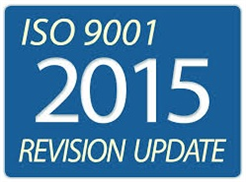ISO 9001:2015, AS 5553, & AS 6081
Timothy Woodcome, Director, NQA, USA
ERAI, Inc.
ISO 9001:2015 was officially published on September 15, 2015. With this release come several significant changes that may affect organizations who also have adopted AS 5553 or AS 6081 programs.
As many may already know, the requirements around risks and opportunities, or risk-based thinking is considered by many to be one of the most significant changes in ISO 9001:2015. Simply put, risk-based thinking drives the incorporation of both risks and opportunities throughout the organization’s processes. Fortunately, this new requirement of ISO 9001:2015 aligns well with the existing intents of AS 5553 and AS 6081. Activities in Design, Procurement and Testing required by AS 5553/6081 are effectively in place to avoid the risk of counterfeit parts. ISO 9001:2015 requires organizations to 1) identify risks and 2) take on actions on said risks. AS 5553/AS 6081 compliant organizations should assure that risks within their counterfeit avoidance programs have been suitably identified and actioned.
Several other changes within ISO 9001 may pose considerations for the AS 5553 and AS 6081 requirements which were based on these ISO requirements:
-
Design – While the verbiage within the ISO 9001 requirements for Design have changed somewhat, the overall intent has not. Generally speaking the requirements have been re-organized a bit, nothing in the Design requirements of ISO 9001:2015 necessitate any specific changes to AS 5553 or AS 6081 systems.
-
Purchasing – Technically the term “Purchasing” does not appear in ISO 9001:2015, instead replaced by “Externally Provided Goods and Services”. Under this definition, external providers would include providers of outsourced goods and services. As such, providers of AS 5553 or AS 6081 test and inspection services would fall under these ISO 9001:2015 requirements. Similarly, ‘non-traditional’ suppliers such as divisions of the organization would also be included in the expanded scope of external providers.
-
Inspection and Test – While neither AS 5553 nor AS 6081 call out specific calibration requirements, ISO 9001:2015 introduces the concept of “Fit for Purpose” as a pre-cursor or perhaps alternative to full calibration traceability. This may allow some flexibility for AS 5553/AS 6081 systems to employ a fitness for purpose verification of test and inspection equipment.
Finally, a few other changes to ISO 9001 requirements should be noted, including some that may benefit from input coming from an AS 5553/AS 6081 program:
-
Context of the Organization – ISO 9001:2015 requires organizations to consider the larger context, or business environment, which include both internal and external issues that can have an effect on the organization. Issues surrounding potential counterfeit electronic parts and the unique business
-
Interested Parties – Another new requirement in ISO 9001:2015 is the consideration of relevant interested parties within the organization’s context and strategic direction. In addition to the usual suspects such as customers and employees, AS 5553/As 6081 compliant organizations may have additional interested parties to bring to the table such as industry groups (e.g. ERAI) and regulatory bodies (e.g. GIDEP).
-
Leadership – ISO 9001:2015 ups the ante a bit on leadership responsibilities and accountabilities. This aspect should not be lost on AS 5553/AS 6081 organizations in light anything from ACEPMS effectiveness and customer satisfaction to the ever-present litigation potential.
To be certain, there are other changes within ISO 9001:2015 that will affect organizations, but these pointers may give organizations a good place to start when considering interactions with AS 5553/AS 6081. ISO 9001 certified organizations have up to three years to transition to the new standard, but most certification bodies will encourage an early start. The new ISO 9001 requirements are complementary to AS 5553 and AS 6081 programs and should not present any show-stopping issues that would hinder the adoption of ISO 9001:2015.
SEE MORE BLOG ENTRIES
|

|